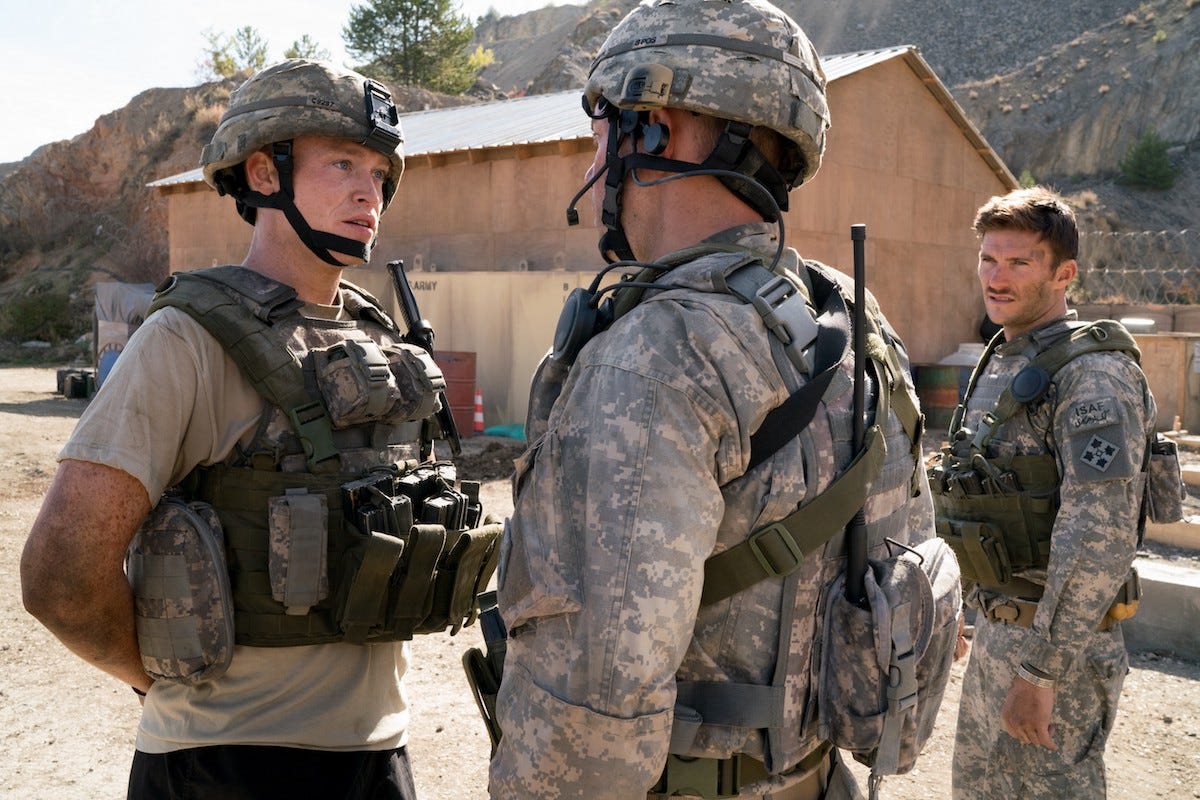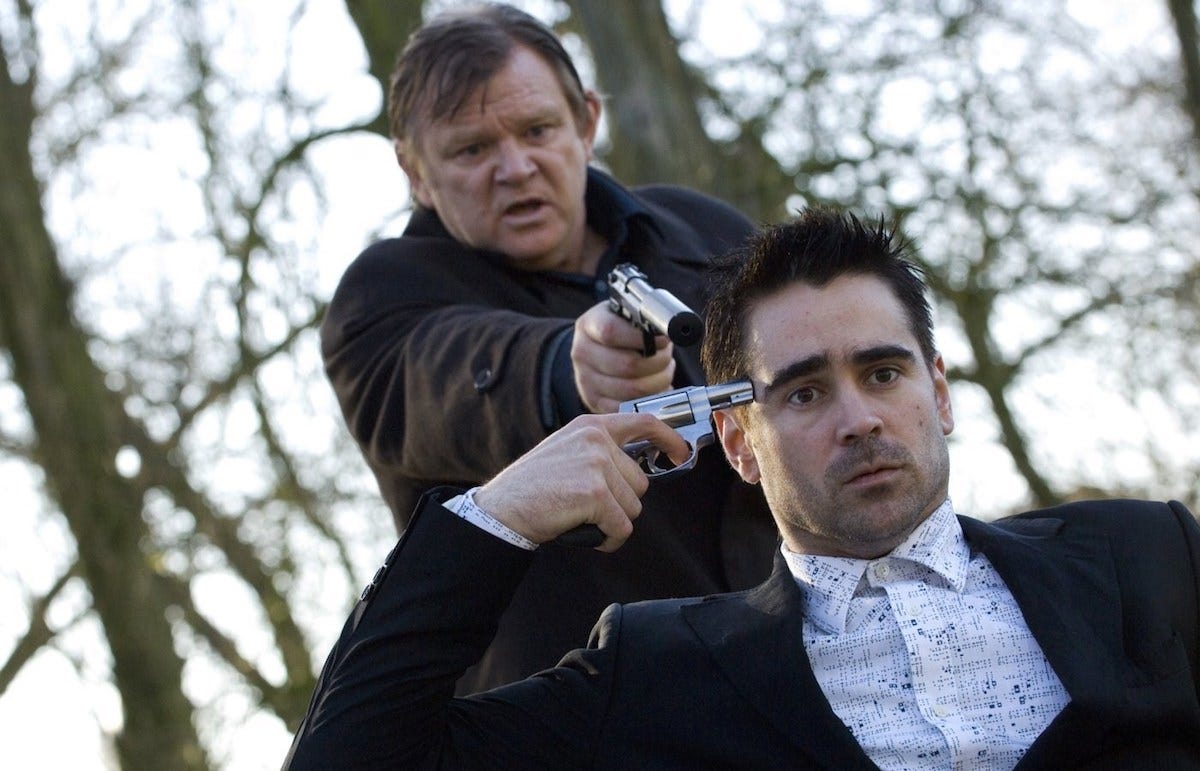Candyman Review
In this age of sequels that serve as soft reboots (The Force Awakens, Star Trek, Halloween (2018)) and socially conscious horror (Get Out, Us), it was only a matter of time before the trends collided. With its central idea—that “the Candyman” is less a specific demon than an idea of oppressed rage made ectoplasm and fitted with murderous hand-hooks—and the fact that it’s both explicitly a follow-up to the original film and a reimagining of the idea for a new age, Nia DaCosta and Jordan Peele’s take on Candyman could have been titled Candyman: Into the Candyverse.
Yahya Abdul-Mateen II stars as artist Anthony McCoy, the “great artistic hope” from Chicago looking to rekindle a career that seems to have stagnated. His paintings have grown stale and similar, images of nooses hanging from black bodies like neckties serving up a weak rhetorical punch. His girlfriend Brianna (Teyonah Parris) has wangled him a spot in an upcoming show for gallery owner Clive Privler (Brian King), but he’s still not sure what to do with the opportunity.
Enter the Candyman. When McCoy hears about an iteration of the legend from William Burke (Colman Domingo), he becomes intrigued. When he starts to listen to tapes about the folklore surrounding “Candyman” made by Helen Lyle (Virginia Madsen), whose interviews and voice fans of the original will recognize, he becomes obsessed. And when the murders begin after McCoy resurrects the legend of the Candyman—say his name five times in the mirror and he will appear behind you, wreaking horrible vengeance on society for having been unjustly killed—he becomes terrified.
Eventually McCoy becomes something else altogether; Candyman’s most interesting and most petrifying visual tic is the heavy dose of body horror that accompanies the film. A bee sting suffered by McCoy in the first act metastasizes, reducing the flesh on his hand to a rotten putrescence.
The second-most interesting tic is that we only see the killer—who is not Daniel Robitaille (Tony Todd), the killer from the original, but a new guy named Sherman Fields (Michael Hargrove) who was murdered by the cops after being falsely accused of handing out candy with razor blades in it—via reflections in mirrors or windows. (At least until we don’t; consistency is not this movie’s strong suit.) The damage he does is real enough, but the man himself is invisible to all except those who happen to see his reflection. He’s got a reverse Dracula thing going on, is what I’m saying, and while this is a pretty neat idea, I do think it has the effect of muting the actual terror onscreen.
Candyman is overstuffed with conceits that are either clever or half-baked, depending on your point of view, but are definitely not given the space needed to breathe properly. Is Candyman a tool to frighten the dread gentrifiers pushing poor black people out of their neighborhoods? Is he little more than a modern Bloody Mary of the sort schoolgirls, white and black alike, have scared themselves silly with for years? Is he a spirit of vengeance to be deployed against corrupt cops the likes of which have been terrifying black men for generations?
Candyman is didactic on matters of race and violence and hopes to deflect from the didacticism by highlighting an imperious white critic who critiques the didactic nature of McCoy’s work. The trap here is obvious for your humble narrator, so I’ll outsource the writing on this matter to Angelica Jade Bastién. The only thing I’ll add is that I think it’s … odd that the worst, most annoying character in the film—a man whose whole deal is exploiting black suffering for monetary gain—is named “Clive Privler,” which sounds oddly like a mashup of “Clive Barker” (who wrote “The Forbidden,” the original short story on which Candyman is based) and “privilege.”
Perhaps I’m reading too much into it; maybe “Privler” is a very common name and “Clive” isn’t a reference to Barker at all. If you’ll grant that I’m not reading too much into it, though, this sort of clever-but-confused conceit (Barker’s original story was more about class than race) is indicative of the way in which the new Candyman is intriguing in places but just doesn’t quite gel as a whole.
Addendum: This review was written after watching the film via a screening link, but I went to a theater last night to see it with some friends. Thematic complaints stand as written, but I would like to highlight briefly how much better certain shots and sequences work on the big screen.
DaCosta’s utilization of long zoom-ins and zoom-outs play better with a massive image; at one point we start on a wide shot of gentrified Chicago and its restaurants and storefronts before zooming in and in and in until Anthony is singled out, followed, marked—a lone bee in the hive. At another point she zooms out from an apartment’s façade while a murder, which we can see through the window, takes place. The move highlights the loneliness of crowded city living: yes, she’s surrounded by folks, but the people stacked above and below her don’t realize she’s dying an ugly death. Also, you can just see what’s happening during this sequence better because everything’s bigger.
What I’m saying is: if you’re going to see the movie—and even if my review is mixed-negative, I think it’s still interesting enough to be worth seeing—you should see it in a theater instead of waiting for it to be released on VOD.
Thanks for reading! If you’d like to discuss Candyman (1992 or 2021) in the comments, become a Bulwark+ member! You’ll also unlock members-only episodes of Across the Movie Aisle and gain access to the Thursday night livestreams.
One Last Note on The Outpost
Somber news out of Afghanistan continues to roll in this week as the American evacuation from Kabul presses on. This is a newsletter about the entertainment industry, so I won’t belabor this week’s bad news on that front. I would just like to highlight this week’s episode of The Bulwark Goes to Hollywood, in which I interview Jake Tapper about his book The Outpost: An Untold Story of American Valor.
I’d also like once again to recommend the book and the movie on which it is based, The Outpost. For those who haven’t seen it, the first half of or so of the film is broken into segments marked by the coming and going of commanders at Combat Outpost Keating, the death or exfiltration of each leading to a new segment. It’s a way to grimly mark the passage of time, as soldiers who aren’t entirely sure why they’re there defend an outpost no one can strategically justify existing.
On the show, I mentioned that I took mild issue with the way the film portrays Capt. Robert Jose Yllescas; as Jake notes, the compression demanded by a two-hour runtime of a nonfiction book often leads to people not getting their proper due. And that’s fair! The movie compresses several years of action down to what feels like a month or two; there wasn’t time to show Yllescas’s efforts to make inroads with locals or his work with the men of COP Keating.
This is one of the reasons why I recommend the book so wholeheartedly. In addition to seeing Yllescas’s work with local leaders that helped stifle the insurgency, we also see the aftermath of his assassination. The collapse of what he had worked for. How one of his little girls reacted to news about her father’s injury.
A photo of his youngest by his grave.
It is a difficult, maybe the most difficult, section of the book to read; as the child of a military family myself, it was exceptionally hard to read. And it’s important to keep in mind, as I sometimes fail to do, when thinking about long-term strategy in Afghanistan and elsewhere.
Assigned Viewing: In Bruges (Prime Video)
Friend of the newsletter Brian Faughnan noted on Twitter that Martin McDonagh’s dark comedy In Bruges is on Prime Video now, and I figure we all need a pick-me-up, so why not watch this [checks notes] bleak masterpiece about a pair of hitmen who go on vacation after one of them accidentally kills a kid during a hit on a priest.
Sure, that doesn’t sound so funny, but trust me: It’s gold. Colin Farrell is a criminally underrated comic presence and McDonagh’s trademark dialogue is snappy, profane, and laugh-out-loud funny. It’s one of the best comedies of the last twenty years, and if you’re looking for something a bit caustic to go along with the week’s news, you have few better options.






Appreciate your review of Candyman. I’d wondered about it but hadn’t really considered seeing it. Your thoughtful review of what seems like simply another summer genre flick provides some incentive to give it a shot, even if just to compare notes. But your strong endorsement of Tapper’s book, and your thoughts on it relative to the movie made from it, makes me think my time is better spent with those important subjects and perspectives. Or, I could just take the path of least resistance and spend some time enjoying In Bruges all over again. Great post
The original had a weirdly high number of somehow resonate takes on the Bloody Mary thing. Kind of always reminded me of Hellraiser, which also pointed to a somehow interesting alternate reality (in that case having to do with the nature of moral existence as opposed to humans and their relationship to myth). I had forgotten, if I ever knew, that Barker was the connecting tissue.
Humans and myth and mytho-history, or nowadays even the notion of virally transmitted narrative and how guilt becomes narrative seems a loss to focus solely on race for this story.
Rather, seems like Candyman is more akin, or was, to Rings, or Buried Giant.